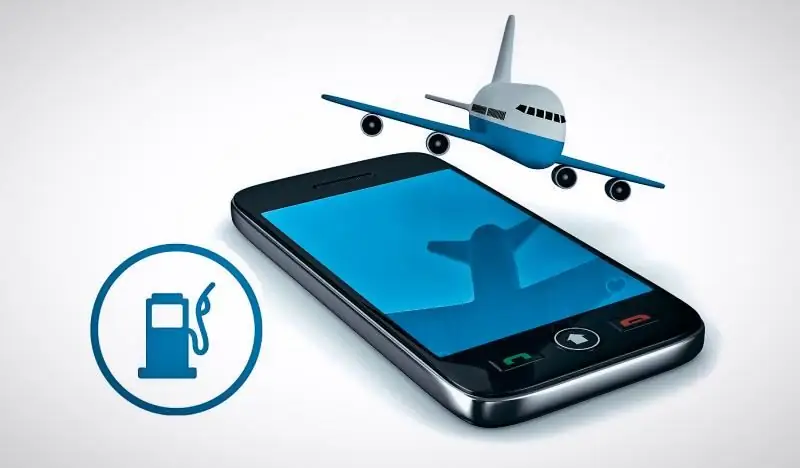
Table of contents:
- Author Bailey Albertson [email protected].
- Public 2023-12-17 12:53.
- Last modified 2025-01-23 12:41.
The safest seats on the plane and survival rules

Air transport is considered the safest and most flights are completed successfully. But sometimes technical problems and other reasons lead to emergency situations. There are recommendations for passengers to increase the chances of survival in such cases.
Content
-
1 Safe seats on the plane
1.1 Table: the percentage of survivorship of passengers in different parts of the plane during its crash
-
2 How to survive a plane crash: rules of behavior in different situations
- 2.1 Fire on board
- 2.2 Emergency landing on water
-
2.3 Accidents during takeoff or landing, aircraft crash
1 Video: how to behave during an emergency landing
- 2.4 Decompression and turbulence
- 2.5 Video: rules of survival in a plane crash
- 3 What not to do in a plane crash
Safe seats on the plane
Survival in case of fire or explosion on an airplane is the lowest. But most accidents happen during takeoff and landing. This means that the chances of surviving in such situations strongly depend on the seat chosen by the passenger when purchasing the ticket. There are two factors to consider:
- Site safety. The first impact in a fall falls on the front of the aircraft, so the probability of escape is lower for those sitting in this section of the cabin. This is also confirmed by an experiment - a crash test of a Boeing 727 - an imitation of an emergency landing with dummies in the cabin. The results of the experiment - 78% of passengers survived, but not those who were sitting in the nose of the plane (business class). The mannequin in an emergency position and with the belt fastened was almost not injured, not fastened - died, in the usual position, but fastened - received a head injury.
- Convenience of the place for evacuation. Emergency exits, which are used for evacuation, are located on the right and left sides of the fuselage. They, as well as the opening means, are marked in such a way that they are clearly visible from a distance. Places near such exits are the safest for evacuation. But they also become dangerous if the fuselage on this side is damaged, strongly crumpled upon landing or outside the flame, etc.

The tail section of the aircraft is considered the safest in case of accidents
But it is important to understand that there are no absolutely safe seats on the plane. So, if a fire breaks out in the rear section of the aircraft, then the passengers sitting in the tail will die. It is impossible to predict whether an emergency will happen and what kind. Therefore, it is recommended to always consider two important rules when choosing a seat on the plane:
- Sit down closer to the aisle - the seats near the window are more dangerous, from there it is more difficult to get to the exit.
- Count the number of rows of seats to the nearest two exits. Choose seats five rows from or closer to the emergency exit.
Table: the percentage of survivorship of passengers in different parts of the plane during its crash
| Seats on the plane | Number of surviving passengers,% |
| Front rows | 49 |
| Middle rows (at the wings) | 56 |
| Tail | 69 |
How to survive a plane crash: rules of conduct in different situations
During the flight, there may be several types of emergency situations. In each case, it is important to know how to act correctly in order to increase your chances of survival.
Fire on board
A fifth of aircraft accidents are accompanied by fires. The survival rate is quite high (up to 70%). Of course, we are not talking about explosions on board or fires when an aircraft falls from a great height, when the chances of survival are practically zero. If a fire breaks out during the landing of the aircraft, immediately after stopping the vehicle, go to the nearest exit. Also observe the following guidelines:
- remove nylon stockings - they melt under the influence of high temperatures and can cause burns;
- bend down or even move to the exit on all fours - there is always less smoke below, which means it is easier to breathe in this position;
- protect your skin from fire with clothing, a blanket, etc.;
- before takeoff, study the path to the nearest exits so that you can quickly get to them even in case of strong smoke in the cabin;
- if the queue does not advance to one of the outputs, use the other.

The survival rate of passengers in case of fires on board the aircraft during landing is 70%
Emergency landing on water
Different aircraft models float in different positions - horizontal, with a nose or tail submerged in the water. Therefore, during an emergency landing on water, it is important to move to an exit that will not be under water. Before takeoff, flight attendants talk about all safety measures and personal protection. It is important to listen carefully and remember what means of salvation are provided for different situations, where they are, how to apply them correctly. You can also read about it in the memos.
The plane is afloat for 10-40 minutes. During this time, it is important to get out of it, putting on a life jacket, and also to launch rafts. They inflate automatically in 1-3 minutes.
Takeoff or landing accidents, aircraft crash
If the plane suddenly loses speed, i.e. makes an emergency landing, it is necessary to properly prepare for hitting the ground. To do this, it is recommended to fasten the seat belts, if this has not been done before, and then take a safe position. There are several options:
- Bend, clasp your ankles or knees with your hands, tilt your head low or put on your knees, and push your legs forward and rest on the floor.
- Put your crossed arms on the back of the front seat, press your head against them, stretch your legs and rest on the floor.

Immediately prior to the emergency landing of the airliner, you must assume a fixed safe position
Also, before each takeoff and before each landing, it is advisable to follow simple rules of personal safety:
- do not take off your shoes, choose a comfortable pair for the flight - leave slates or stiletto heels for more suitable occasions, but such shoes are better than walking barefoot over the hot wreckage;
- choose clothes that are closed and comfortable, not synthetic, which can protect against fire, smoke;
- do not cover your ears with headphones, eyes with a sleep mask, in order to be concentrated in these minutes;
- do not place heavy bags over your head;
- remember to use seat belts;
- remove your tie, scarf, glasses, hairpins - such accessories can be dangerous in an emergency.
Video: how to behave during an emergency landing
Decompression and turbulence
Sometimes there is turbulence or decompression on board the aircraft. During this, passengers can receive injuries of varying degrees, there are almost no deaths.
Turbulence is air currents that move erratically and often create turbulence. The reason for their appearance is the uneven heating of the earth's surface, as a result of which air masses have different temperatures and rise at different speeds. Because of this, the plane can fall into air pockets or rise sharply in updrafts. Loose objects and passengers not wearing seat belts are the main causes of injury.
Decompression is the rarefied air on board. It usually starts with a loud roar as air exits the plane and fills the cabin with fog and dust. Air leaves the lungs of a person very quickly, but it is impossible to detain it, therefore it is necessary to use oxygen masks. You should also fasten your seat belts and prepare for the rapid descent of the aircraft.
Video: rules of survival in a plane crash
What not to do in a plane crash
The most dangerous thing in an aircraft emergency is the wrong reaction of passengers. There are two options for behavior:
- apathy - often a person simply becomes numb and does nothing, does not even have time to unfasten his seat belt, not to mention fast movement to the emergency exit, etc.;
- panic - you cannot get up from your seat until the transport stops completely, it is important to follow all the recommendations of flight attendants and pilots, since the lack of order will make it difficult to evacuate passengers at times when every second is important.
Confident behavior and knowledge of what and how to do in an emergency helps to survive a plane crash. Listen carefully to the flight attendants and study memos, brochures, which tell you about the rules of conduct in case of fire, emergency landing, etc. Mentally navigate the fastest route to the nearest exits, do not unfasten your seat belts during takeoff and landing, observe other precautions to increase the chances of survival in dangerous situations.
Recommended:
Leukemia (viral Leukemia) In Cats: Causes, Main Symptoms Of The Disease, Treatment And Prognosis Of Survival, Recommendations Of Veterinarians

Causes of viral leukemia in cats Infection routes. How does the disease manifest? Diagnostics and treatment. Forecast. Preventive measures. Veterinarian recommendations
Immunodeficiency In Cats: Which Virus Causes The Disease, Main Symptoms, Treatment And Prognosis Of Survival, Recommendations Of Veterinarians

The causative agent of viral immunodeficiency in cats. Infection routes. How it manifests itself. Diagnostics. Treatment and care. Review of drugs. Forecast, prevention
The Safest Place In The Car For A Passenger, Including A Child, Statistics

The safest place in the car for a passenger, a child. Opinion of the traffic police
Why You Can't Use The Phone On The Plane And At The Gas Station

Reasons why you cannot use a mobile phone while on an airplane or at a gas station: the real state of affairs and the refutation of myths
The Safest Places In Different Modes Of Transport

What are the best seats to occupy when traveling on different vehicles, so that in the event of a disaster it is most likely to survive
